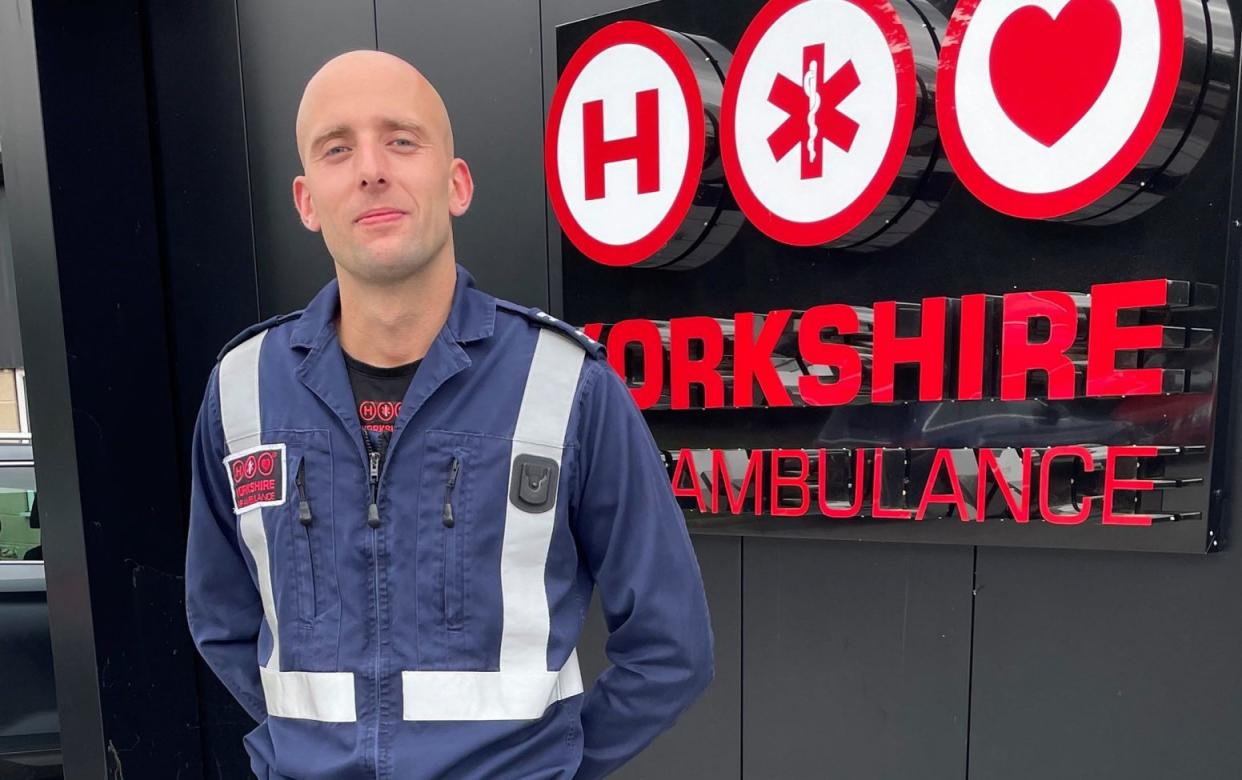Air ambulance may blacklist regions after laser burns crew member’s eye

An air ambulance service is considering blacklisting certain regions from its rescue operations after a crew member was injured in a laser incident.
Alex Clark, 30, had his cornea burned last Friday from a laser beamed at the helicopter during a transit flight back to the Yorkshire Air Ambulance (YAA) airbase at Nostell near Wakefield.
The technical crew member told The Telegraph the incident occurred while he was wearing night vision goggles as the chopper flew over Bradford.
He said the light had “hit my retina - straight after it was quite watery” and that he could not see clearly from between 30 seconds to a minute afterwards.
The laser beam had hit the inside of his goggles, causing a flare-out of the lens.
He added that the incidents were becoming more frequent.
“Unfortunately it’s quite common - we’ve had three in the past two weeks. It seems to be more of an issue as you get into winter, probably because the nights are longer.”
Mr Clark said his eye had healed after two or three days but chief pilot Owen McTeggart said that if such attacks continue he may avoid regions where the attacks happen to protect crew members and the public.
Grave concern
“I’m gravely concerned, not just for crew members but the general public at large,” he said.
He said that the risks of lasers included “career-ending” eye damage for pilots and that for the public it meant crews could not land on scene to help patients.
“If this kind of thing persists I’ll have to consider if I let my crews in dangerous environments,” he added.
He said that Mr Clark had experienced a glancing beam of the laser at a higher altitude but that were this to happen in a landing phase, “the laser’s going to affect the pilot over a longer period and could be permanent - that’s that crew member’s career over”.
“The closer the laser is, and the longer the exposure, the more damage.”
He added that he didn’t understand why the lasers were available to the general public.
“Before Alex had his injury my recent assessment was they were more of an inconvenience - my view is changing slightly.
“My biggest concern is, firstly, my crew members and, secondly, Yorkshire. I don’t think I can have my staff facing dangers that aren’t required when they are doing their job.”
One solution would be to ask crews to land further away from the scene, he said, but this created further delays. “Our modus operandi is to get the doctor and paramedic on scene as quickly as we can.”
Worst-case scenario
“The worst-case scenario is if lasers are being shined in the area, we can’t land.”
Mr Clark added: “I don’t understand why you’d need such a powerful laser.”
Asked if he supported a ban of their sale, he said: “Yes, 100 per cent. I don’t see any use for them - they’re not needed, absolutely.”
“A lot of it seems to be parents who buy them on holiday for their children - maybe they don’t understand the full extent of what they are and what they are capable of doing.”
“If it temporarily blinds the pilot it could potentially bring down a helicopter.”
“I think maybe people, they see it as a victimless crime but you wouldn’t stand above a bridge on a motorway and shine lights in drivers’ eyes.”
He said that it would cause delays in reaching patients, or in the worst case scenario the crew would not land on that job.
A YAA spokesperson said: “These attacks, characterised by their intermittent and seemingly random nature, have left the YAA searching for answers, as there appears to be no discernible pattern or motive behind these acts of senseless stupidity.


